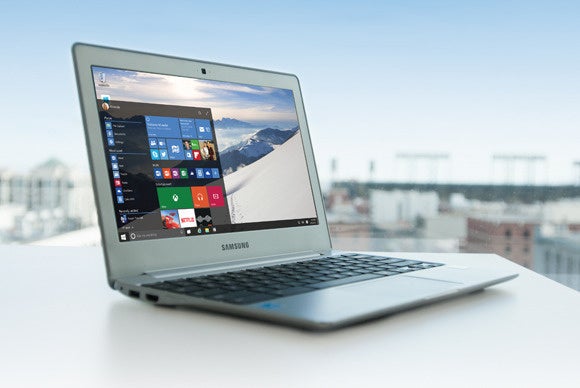
Microsoft plans to use a stick instead of a carrot to keep Windows 10 PCs up to date, at least for Home users.
The latest Windows 10 build does not include any way to bypass automatic updates, Ars Technica reports. While this has always been the case with Windows Insider Preview releases, build 10240 is reportedly the one Microsoft will provide to PC vendors, suggesting that updates will be mandatory for anyone who purchases a PC running Windows 10 Home. (Windows 10 Pro users can delay feature updates by up to eight months through a “Current Branch for Business” update cycle.)
As The Register reports, Microsoft confirms that it will require automatic updates in its Windows 10 licensing agreement:
“The Software periodically checks for system and app updates, and downloads and installs them for you,” the agreement says. “You may obtain updates only from Microsoft or authorized sources, and Microsoft may need to update your system to provide you with those updates. By accepting this agreement, you agree to receive these types of automatic updates without any additional notice.”
Why this matters: Even as operating systems are shifting from static releases to ever-evolving services, this is an extreme step by Microsoft. With the exception of Google’s ChromeOS, most other modern operating systems don’t require mandatory feature updates. Instead, platforms like Mac OS X, iOS, and Android treat updates as an optional benefit. Microsoft may want to avoid another XPocalypse in which millions of PCs run out-of-date software, but risks a major backlash if an update goes wrong.
Hardly a flawless track record
Microsoft’s mandatory updates might be easier to accept if the company was better at avoiding update snafus.
On several occasions, Windows updates have wreaked havoc on Microsoft’s own Surface Pro tablets, causing battery drain, Wi-Fi connectivity problems, and boot failures. At one point, users were stuck with those issues for more than a month, as Microsoft delivered a faulty update just before closing up shop for holiday vacation.
Last year, Microsoft delivered an update for Windows 7 that created numerous problems for Windows Defender, VirtualBox, and certain AMD graphics drivers. It also had the nasty side effect of preventing future automatic updates, prompting Microsoft to release a patch that users had to install manually.
Bugs aside, there’s also the risk that automatic updates could remove features that some users rely on. Windows 10, for instance, marks the end of Windows Media Center, desktop gadgets, and the old Windows 7 versions of Minesweeper and Solitaire. As Microsoft transitions to a steady cycle of new releases, it seems likely that some Windows 10 features will get dropped along the way, and users will have no recourse.
Microsoft’s desire to build an modern platform and ecosystem is understandable, but doing so through brute force may not be the best approach. On some level, that’s exactly what Microsoft tried to do with the drastic redesign of Windows 8, and we all know how that went.
[“source – pcworld.com”]







